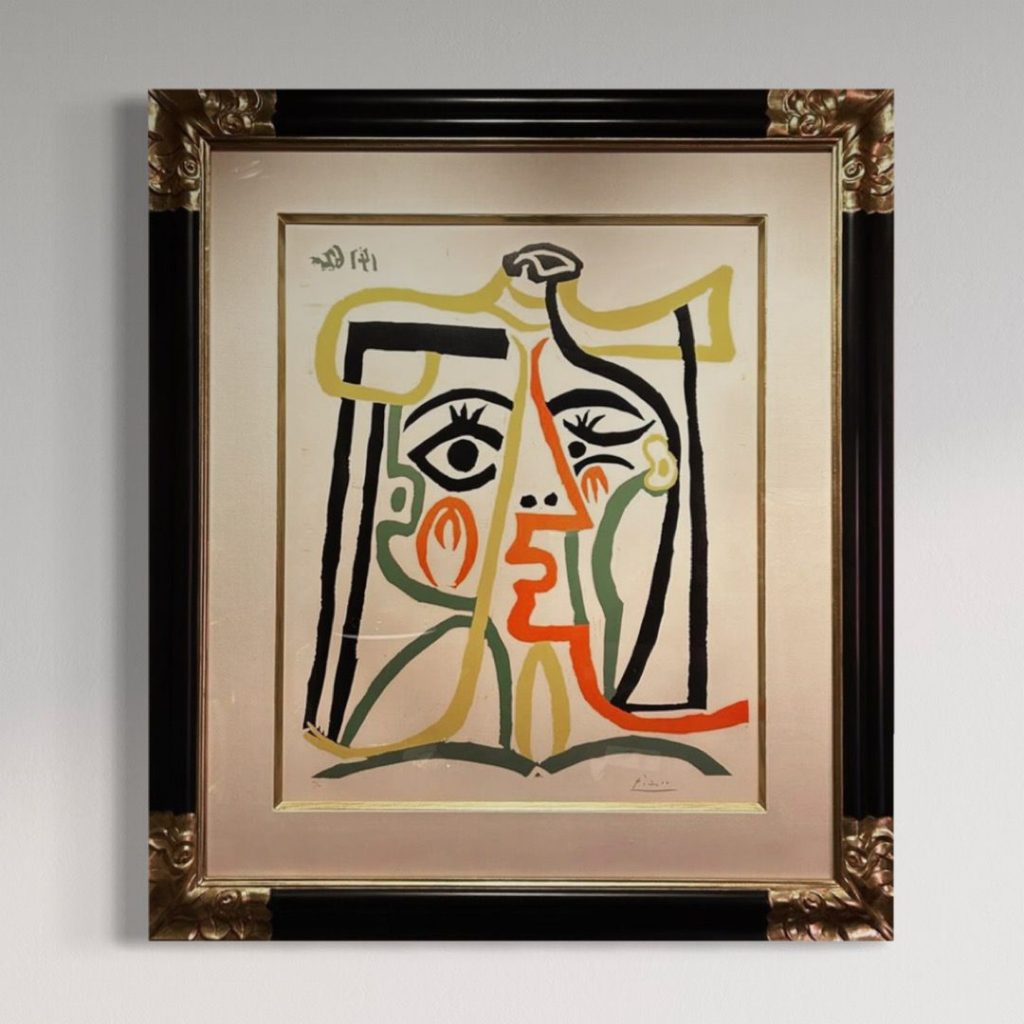Pablo Picasso (Spanish, 1881-1973)
Le Bain (28 January, 1968)
Pencil on paper
48.3cm x 59.4cm
Signed, dated and numbered in pencil.
Literature: Zervos, C. Pablo Picasso Catalogue Raisonne, Vol. 27, pg. 78. Ref #204
As winter dawned in 1954, Spanish painter Pablo Picasso found himself at a crossroads between the future and the past. His friend, mentor and sometimes rival, Henri Matisse (1869-1954), a French painter many years his senior, had just died. Matisse was a master of color, provided Picasso with a back-and-forth challenge which pushed each artist beyond their natural abilities, each in the never-ending struggle to be better than the other. “You have got to be able to picture side by side everything Matisse and I were doing at that time.” Picasso once said. “No one has ever looked at Matisse’s painting more carefully than I; and no one has looked at mine more carefully than he. ” So, when the 84 year old Mattise died at the beginning of winter in 1954, Picasso no longer could depend on his rival to keep competitive blood flowing in his veins. Further, it made the 73 year old Master feel mortal. Color was sapped from his art. He began etching and printing in earnest. He began experimenting with pottery and ceramics. He then looked to the great masters of the past Ingres, Delacroix, Velasquez, and began painting variations on their classical themes of French and Spanish Romanticism. Among these themes was Jean-Auguste-Dominique Ingres’ (1780-1867) paintings of Turkish baths. Image result for ingres le bain
Communal baths were common social platforms where business and friendships blossomed. Both titillating and historical, Picasso saw them as a natural bridge between the classical to the modern. It also allowed Picasso to subtly thumb his nose at a Bourgeoisie society that vilified nudity in public, but relished it behind closed doors. Picasso simplified the baths. He updated them and brought them into the 20th Century. He populated them with pretty girls with a haptic, stream-of-consciousness speed which spoke to his perceived sense of mortality. Women kept him young and virile, like the matador he always fancied himself as. Their presence was a check on his age, and a reminder of the bullfighter that still resided within him.
PRICE on request




















